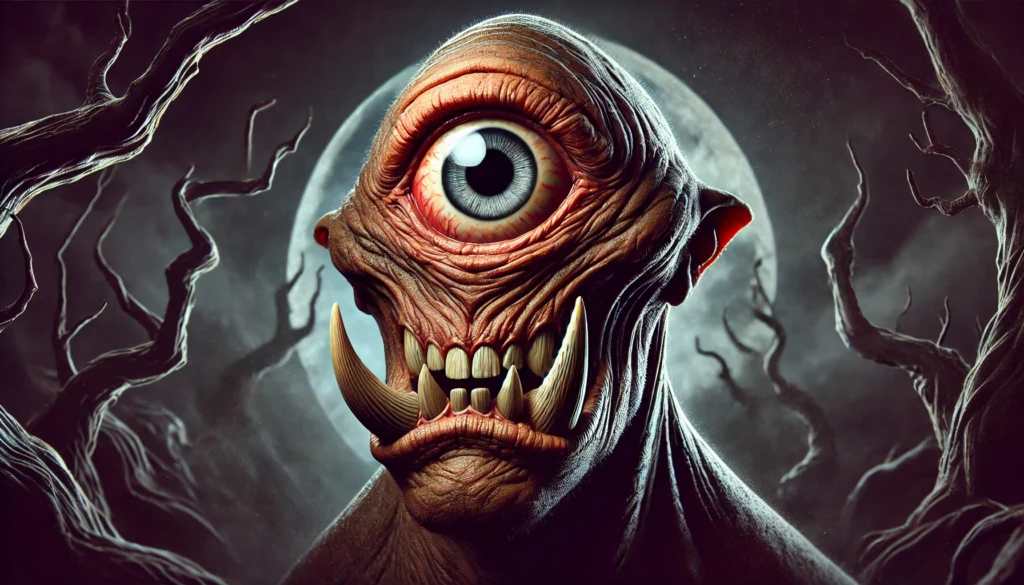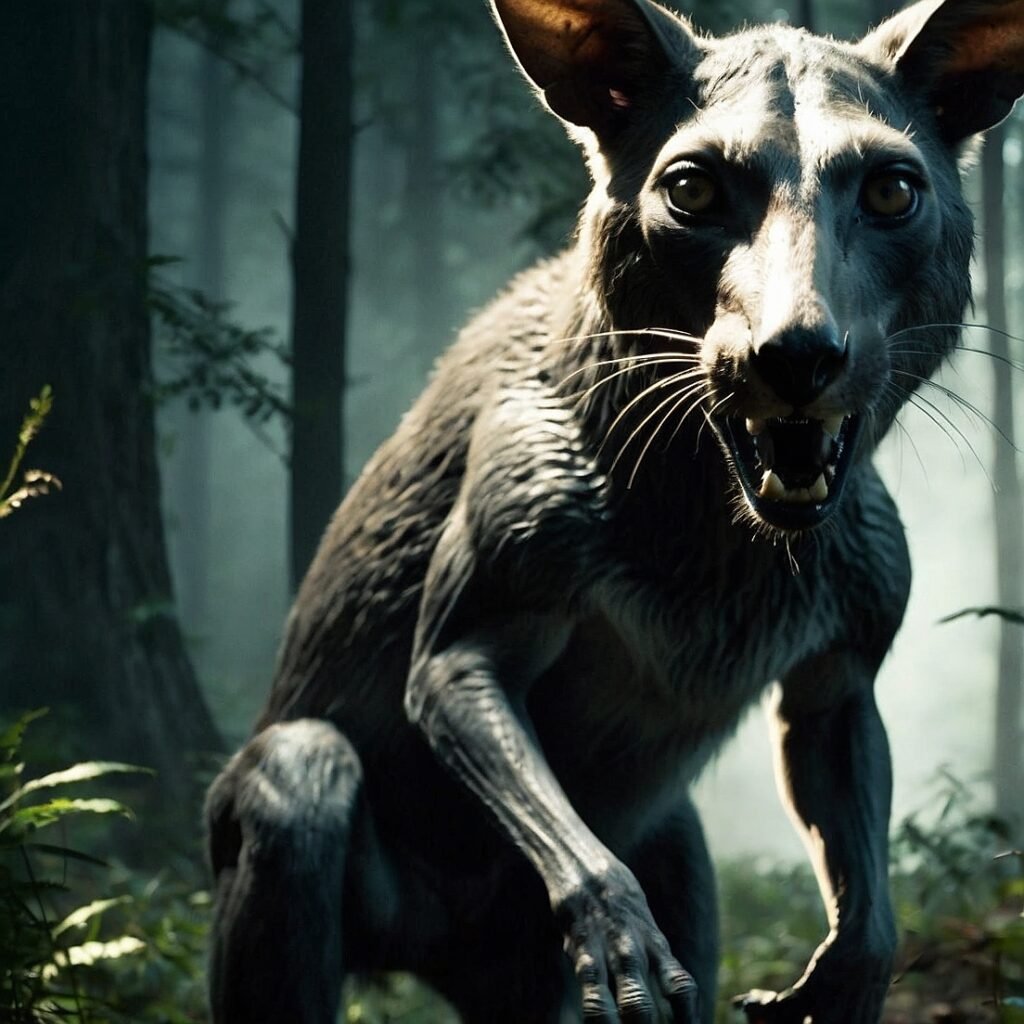The Philippines, an archipelagic nation composed of over 7,000 islands, boasts a rich tapestry of myths, legends, and folkloric creatures that have been passed down through generations. These tales, deeply rooted in the country’s diverse cultural heritage, offer fascinating insights into the beliefs, values, and imaginations of the Filipino people. Among the myriad of mythical beings that populate these stories, one creature stands out for its peculiar characteristics and intriguing narrative: the Bungisngis, also known as the giggling one-eyed monster of Filipino folklore.
In this comprehensive exploration, we will delve into the origins, characteristics, and cultural significance of the Bungisngis. We will examine its place within the broader context of Filipino mythology, compare it to similar creatures from other cultures, and analyze the enduring impact of this legend on contemporary Filipino society. By the end of this article, readers will gain a deeper understanding of this unique mythological entity and its importance in the rich folklore of the Philippines.
Origins and Etymology
The Name and Its Meaning
The term “Bungisngis” is derived from the Tagalog language, one of the major languages spoken in the Philippines. It is a combination of two root words: “bungis,” which means to bare one’s teeth or to grin, and “ngisi,” which refers to a wide grin or laugh. When combined, “Bungisngis” literally translates to “one who constantly grins” or “the giggling one.” This etymology provides immediate insight into one of the creature’s most distinctive features: its perpetual state of laughter or amusement.
Regional Variations
While the Bungisngis is primarily associated with Tagalog folklore, variations of this creature can be found in other regions of the Philippines. Each area may have its own unique interpretation or name for a similar entity, reflecting the diverse linguistic and cultural landscape of the country. For instance, in some Visayan regions, a comparable creature might be known by a different local name but share similar characteristics with the Bungisngis. This regional diversity underscores the importance of considering local variations when studying Filipino folklore.
Historical Context
The exact origins of the Bungisngis legend are difficult to pinpoint, as is often the case with oral traditions. However, scholars believe that the story of the Bungisngis, like many other Filipino mythological tales, predates the Spanish colonial period (1565-1898). The persistence of such folklore through centuries of colonial influence and modernization speaks to its deep cultural resonance and the Filipino people’s strong connection to their pre-colonial heritage.
Physical Characteristics and Abilities
Appearance
The Bungisngis is typically described as a colossal humanoid creature with several distinctive physical features:
- Size: Significantly larger than an average human, often depicted as giant-like in stature.
- Eye: A single, large eye centered on its forehead, reminiscent of the Cyclops from Greek mythology.
- Mouth: An oversized mouth with prominent teeth, always fixed in a wide grin or laugh.
- Body: Muscular and imposing, with some variations describing it as hairy or having tough, leathery skin.
- Limbs: Powerful arms and legs, capable of great feats of strength.
To better visualize these characteristics, consider the following table:
| Feature | Description |
|---|---|
| Height | 2-3 times taller than an average human |
| Eye | Single, large eye centered on forehead |
| Mouth | Oversized, constantly grinning or laughing |
| Body Type | Muscular, sometimes hairy or with tough skin |
| Strength | Superhuman, capable of uprooting trees |
Abilities and Traits
Beyond its physical appearance, the Bungisngis is known for several unique abilities and behavioral traits:
- Superhuman Strength: The Bungisngis possesses incredible physical power, often described as being able to uproot trees or hurl large boulders with ease.
- Constant Laughter: True to its name, the Bungisngis is characterized by its perpetual state of amusement, manifested through continuous giggling or loud laughter.
- Invulnerability: Some legends suggest that the Bungisngis has tough skin or magical properties that make it resistant to conventional weapons.
- Simple-mindedness: Despite its fearsome appearance and strength, the Bungisngis is often portrayed as somewhat dim-witted or easily tricked.
- Nocturnal Nature: Many stories depict the Bungisngis as being primarily active during the night, adding to its mysterious and fearsome reputation.
These abilities and traits combine to create a creature that is simultaneously terrifying and somewhat comical, a duality that is central to its enduring appeal in Filipino folklore.
The Bungisngis in Filipino Folklore
Role in Mythology
The Bungisngis occupies a unique position in Filipino mythology, straddling the line between monster and trickster figure. Unlike purely malevolent creatures in folklore, the Bungisngis is not always portrayed as evil, but rather as a force of nature that can be both destructive and, at times, foolish. This nuanced characterization reflects the complex worldview inherent in Filipino mythology, where beings are rarely presented in simple black and white terms.
In many tales, the Bungisngis serves as a challenge or obstacle for heroes to overcome, testing their wit and courage. These stories often follow a familiar pattern:
- The Bungisngis terrorizes a village or area.
- A hero or group of heroes attempts to confront the creature.
- The heroes use cleverness rather than brute force to outwit the Bungisngis.
- The creature is either defeated or driven away, restoring peace to the community.
This narrative structure not only entertains but also imparts important cultural values, such as the importance of intelligence over physical strength and the power of community cooperation in facing challenges.
Famous Tales and Legends
Several well-known stories feature the Bungisngis, each highlighting different aspects of the creature and the lessons it imparts. One of the most famous is the tale of “The Bungisngis and the Boat Pullers,” which goes as follows:
- A group of fishermen encounters a Bungisngis while pulling their boat ashore.
- The creature, amused by their efforts, offers to help but ends up breaking the boat due to its immense strength.
- The fishermen, realizing they can’t match the Bungisngis in strength, challenge it to a contest of endurance instead.
- They trick the Bungisngis into staring at the sun, claiming they can do so without blinking.
- The creature’s single eye is damaged by the sun, allowing the fishermen to escape.
This story exemplifies the common theme of humans using wit to overcome a physically superior opponent, a motif found in many cultures worldwide.
Cultural Significance and Interpretations
Lessons and Morals
The tales of the Bungisngis often carry important moral lessons and cultural values, including:
- The power of intelligence: Many stories emphasize how quick thinking and cleverness can overcome brute strength.
- Community cooperation: Legends frequently depict communities coming together to face the threat of the Bungisngis.
- Respect for nature: The Bungisngis, as a powerful forest creature, may represent the unpredictable and sometimes dangerous aspects of nature.
- Humility: The creature’s tendency to laugh at others serves as a caution against arrogance and the importance of humility.
- Courage in the face of the unknown: Heroes who confront the Bungisngis embody the value of bravery when facing the mysterious or frightening.
Psychological and Social Interpretations
Modern scholars have proposed various interpretations of the Bungisngis legend, viewing it through psychological and sociological lenses:
- Jungian Analysis: The Bungisngis might represent the “shadow” archetype, embodying aspects of human nature that are often repressed or feared.
- Social Control Mechanism: Like many folkloric monsters, the Bungisngis could serve as a deterrent to keep children (and adults) from wandering into dangerous areas or engaging in risky behavior.
- Cultural Identity: The persistence of such legends helps maintain a connection to pre-colonial Filipino heritage and cultural identity.
- Environmental Awareness: Some interpret the Bungisngis as a personification of natural forces, encouraging respect and caution towards the environment.
To illustrate the multifaceted nature of these interpretations, consider the following chart:
graph TD
A[Bungisngis Legend] --> B[Moral Lessons]
A --> C[Psychological Interpretations]
A --> D[Social Functions]
A --> E[Cultural Significance]
B --> F[Intelligence over Strength]
B --> G[Community Cooperation]
B --> H[Respect for Nature]
C --> I[Shadow Archetype]
C --> J[Confronting Fears]
D --> K[Social Control]
D --> L[Environmental Awareness]
E --> M[Cultural Identity]
E --> N[Pre-colonial Heritage]This diagram illustrates the complex web of meanings and functions that the Bungisngis legend serves within Filipino culture, demonstrating its importance beyond mere entertainment.
Comparative Mythology
Similar Creatures in World Folklore
The Bungisngis shares characteristics with mythological beings from other cultures, suggesting possible cultural exchanges or universal archetypes in human storytelling. Some notable comparisons include:
- Cyclops (Greek Mythology): Like the Bungisngis, the Cyclops is a one-eyed giant known for its strength. However, the Greek Cyclops is typically not associated with laughter.
- Oni (Japanese Folklore): These demons are often depicted as large, strong, and sometimes single-eyed, though they are generally more malevolent than the Bungisngis.
- Trolls (Scandinavian Folklore): While not one-eyed, trolls share the Bungisngis’ association with great strength and sometimes simple-mindedness.
- Fomorians (Irish Mythology): These supernatural beings are sometimes described as having a single eye, leg, and arm, showcasing another cultural iteration of the one-eyed monster concept.
To better visualize these comparisons, consider the following table:
| Creature | Origin | Similarities to Bungisngis | Differences |
|---|---|---|---|
| Cyclops | Greek | One-eyed giant, strong | Not associated with laughter |
| Oni | Japanese | Large, sometimes one-eyed | More malevolent |
| Trolls | Scandinavian | Strong, simple-minded | Not one-eyed |
| Fomorians | Irish | Sometimes one-eyed | More varied in appearance |
These comparisons highlight both the uniqueness of the Bungisngis and its place within a broader context of global mythology.
Cultural Exchange and Influences
The similarities between the Bungisngis and creatures from other mythologies raise interesting questions about cultural exchange and the development of folklore:
- Pre-colonial Trade: The Philippines’ historical trade connections with other Asian countries and even distant civilizations could have facilitated the exchange of stories and mythological concepts.
- Colonial Influences: The Spanish colonial period may have introduced elements of European folklore, potentially influencing or blending with existing Filipino legends.
- Universal Archetypes: The recurrence of similar mythological figures across cultures could point to universal human experiences or psychological archetypes, as proposed by scholars like Carl Jung.
- Environmental Factors: The presence of similar creatures in the folklore of different tropical or island cultures might reflect shared environmental challenges or experiences.
Understanding these potential influences and connections helps place the Bungisngis within a broader context of world mythology while also highlighting its unique Filipino characteristics.
The Bungisngis in Modern Filipino Culture
Literature and Media
The legend of the Bungisngis continues to inspire contemporary Filipino artists and storytellers:
- Children’s Books: Modern retellings of Bungisngis stories are popular in children’s literature, often with colorful illustrations that bring the creature to life for new generations.
- Film and Television: Filipino horror and fantasy genres occasionally feature the Bungisngis or creatures inspired by it, adapting the legend for modern audiences.
- Comic Books and Graphic Novels: Filipino comic artists have incorporated the Bungisngis into both traditional and reimagined storylines, often blending folklore with contemporary themes.
- Digital Media: Online content creators, including YouTubers and game developers, have used the Bungisngis as inspiration for various projects, helping to keep the legend alive in the digital age.
Cultural Preservation and Education
The Bungisngis legend plays a role in efforts to preserve and promote Filipino cultural heritage:
- Educational Programs: Schools often include Filipino folklore, including the Bungisngis, in their curriculum to teach students about their cultural roots.
- Cultural Festivals: Some regional festivals feature representations or retellings of the Bungisngis legend as part of their celebrations of local folklore.
- Museum Exhibits: Cultural museums in the Philippines sometimes include displays or interactive exhibits about mythological creatures like the Bungisngis.
- Academic Research: Scholars continue to study and analyze the Bungisngis legend as part of broader research into Filipino mythology and cultural identity.
To illustrate the Bungisngis’ presence in various aspects of modern Filipino culture, consider the following chart:
pie title Bungisngis in Modern Filipino Media
"Children's Books" : 30
"Film and TV" : 25
"Comic Books" : 20
"Digital Media" : 15
"Educational Materials" : 10This chart provides a rough estimation of the Bungisngis’ representation across different media forms, highlighting its continued relevance in contemporary Filipino culture.
Conclusion
The legend of the Bungisngis, the giggling one-eyed monster of Filipino folklore, stands as a testament to the rich and diverse mythological heritage of the Philippines. From its origins in pre-colonial oral traditions to its adaptations in modern media, the Bungisngis continues to captivate audiences and serve as a link to the cultural past of the Filipino people.
Through our exploration, we have uncovered the multifaceted nature of this mythical being:
- Its distinctive physical characteristics and abilities set it apart from other folkloric creatures.
- The moral lessons embedded in Bungisngis tales reflect important cultural values and social norms.
- Its similarities to mythological beings from other cultures highlight potential cultural exchanges and universal storytelling themes.
- The enduring presence of the Bungisngis in modern Filipino culture demonstrates its continued relevance and adaptability.
As the Philippines continues to navigate the challenges of modernization and globalization, legends like the Bungisngis serve as important cultural anchors, reminding Filipinos of their unique heritage and the wisdom contained within their ancestral stories. By studying and preserving these myths, we not only gain insight into the past but also find guidance for the future, learning from the cleverness, courage, and community spirit exemplified in these age-old tales.
The giggling one-eyed monster, with its blend of fearsome strength and comical simplicity, continues to inspire, educate, and entertain, ensuring that the rich tapestry of Filipino folklore remains vibrant and relevant for generations to come.
Disclaimer: This article is based on folkloric accounts and academic interpretations of the Bungisngis legend. While every effort has been made to present accurate information, the nature of mythology means that variations in stories and interpretations exist. Readers are encouraged to explore further sources and local variations of the legend. If you notice any inaccuracies or have additional information to contribute, please contact us so we can update and improve this article promptly.




